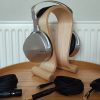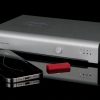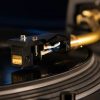Having good headphones can bring you a lot of benefits. From workout sessions to home theatre, they can be your perfect mates in many ways. But choosing any new headphones can be a confusing task, especially if you aren’t familiar with what’s on offer. Keeping this in mind, here is a simple infographic with which, you should be able to narrow down your choices to find headphones that are best suited to you and your needs.
Following are the different factors to keep in mind before you buy any headphones:
Form Factor
All headphones are not same. Design plays a very important role in the behaviour of headphones. Here are some of the common types of headphones and their pros and cons.
Earbuds/In-Ear Headphones:
Earbuds and in-ear headphones are also called earphones. It’s because they consist of tiny earpieces that we place inside our ears. Although used interchangeably for each other, earbuds and in-ear headphones have one minor difference. The difference is that while in ear headphones stick deep into your ear canal to form an airtight seal (which results in better noise isolation), earbuds simply ‘sit’ outside your ear canal. If you want to know more about them, here’s an en-detail review about in-ear headphones/earbuds.
On-Ear Headphones
On-ear headphones belong to the full-size headphones category. Their earcups are a bit smaller than those of over-ear headphones. Due to this, they don’t fully cover our ears, which in turn causes them to leak some amount of noise while you’re listening. But still, their noise isolation is better as compared to earbuds. Since their earcups sit on top of ears, it can cause discomfort to certain users.
Over-Ear headphones
Over-Ear headphones are also called circumaural headphones. Their earcups are a bit larger than those of on-ear headphones. That’s why they completely cover our ears to form an airtight seal. This results in good noise isolation and good comfort level. On the other hand, they are bulkier and less portable than the other types of headphones.
Drivers
In simple terms, these are what we would think of as the speaker portion of the headphones. These drivers are separated into two main types, electrostatic drivers (these are used in over ear headphones) and balanced-armature drivers (these are usually used in in-ear headphones).
Open or Closed Back:
Sometimes headphones offer open backs which allow the sound to pass through the unit, which gives a more realistic sound. Those headphones are called open-backed headphones. Closed back headphones block outwards sound and help prevent others from hearing what you are listening to, that’s why well suited to public places.
Frequency:
Humans hear in the 20-20,000 GHz range. The higher the frequency response the better the headphones will handle the entire range of sound.
Impedance:
The larger the impedance, the more power that the unit will draw – something to keep in mind for long trips or listening sessions. If you’re looking a headphones pair that you would mostly connect to your smartphone, then look out for headphones that have a relatively smaller impedance.
Sensitivity:
How much volume the unit can produce from a power source. High sensitivity headphones are best used for the likes of smartphones and tablets.
To go Wireless or not?
While wired headphones offer superior sound quality and have no direct charging needs themselves, they do limit your freedom of movement, and the cable may break or snap on low-quality models. Wireless headphones can be a good option is this scenario, but they have some disadvantages of their own like battery, sound quality etc.
Common Headphones Uses:
Gaming:
Look for headphones that have a deep bass and the addition of a built-in microphone.
Sports:
The best headphones here should be those that are durable, water resistant and lightweight.
Home Entertainment:
You’ll want the over-ear types here, for the best home theatre experience.
DJs
DJs mostly need high-volume and heavy duty headphones, with an emphasis on bass.
What to keep in mind:
Durability
Heavier headphones tend to be sturdier over a longer period.
Comfort
Try to test out a headphone if you can, what might be comfortable for a brief period might be uncomfortable for longer periods. But there’s one catch here. Unlike other things we’ve discussed here, the comfort level is relative. What is perfect for me, might not be so good for you!
Portability:
Earphones are more portable usually. If you want full-sized headphones but are concerned about portability then consider fold-up headphones. These fold-up headphones can be collapsed from the middle of their headband.
Sound Quality:
Like comfort, understanding of good sound is also 100% varied and personal. Although there is no hard and fast rule, try headphones that deliver balanced sound.
Cable:
Many people buy headphones and go to home only to find out that either the cable is not long enough, or it’s too long. You’ll want to check the length and quality beforehand too because low-quality cable can be easily broken.































